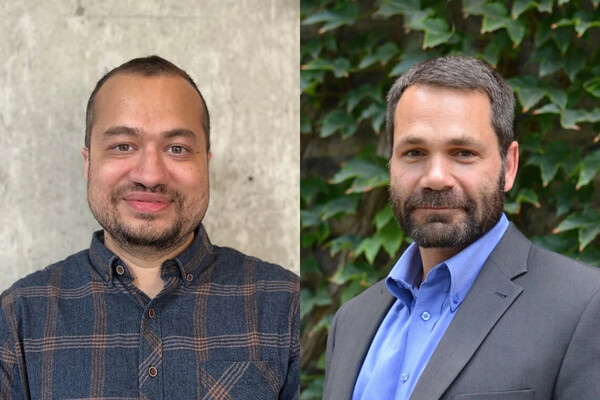Mobile Menu
- Education
- Research
-
Students
- High School Outreach
- Undergraduate & Beyond: Community of Support
- Current Students
- Faculty & Staff
- Alumni
- News & Events
- Giving
- About

Repetitive transcranial magnetic stimulation was associated with a reduction in self-reported cannabis use by up to 60 per cent in people with schizophrenia who have cannabis use disorder, according to a new study from the University of Toronto and the Centre for Addiction and Mental Health.
The double-blind study included 19 participants and is the first of its kind to investigate the effectiveness of rTMS in treating cannabis use disorder, or CUD, in people with schizophrenia.
“People with schizophrenia have very high rates of cannabis use disorder compared to the general population, and there is strong evidence that cannabis use worsens psychiatric symptoms and quality of life in these people,” said Tony George, senior author on the study who is a professor of psychiatry at U of T’s Temerty Faculty of Medicine and a clinician-scientist at CAMH.
“Despite the known harmful effects, there is currently no approved treatment for CUD with or without schizophrenia. These results indicate rTMS may be a safe and effective way to reduce cannabis use among people with schizophrenia,” George said.
The journal Schizophrenia published the results this week.
Until recently, brain stimulation technologies such as rTMS were used primarily for treatment-resistant depression. However, studies have now found rTMS to be effective in reducing drug use and cravings for several substance use disorders in the general population.
Study participants were given rTMS treatment at the Temerty Centre for Therapeutic Brain Intervention at CAMH five times a week for four weeks, targeting the brain’s dorsolateral prefrontal cortex, which is associated with the brain’s reward system and executive function.
Those who were given rTMS reported a reduction in cannabis use by up to 60 per cent after 28 days as well as reduced cravings, compared to controls receiving sham rTMS.
The authors said that one reason there is currently no effective treatment for CUD in people with schizophrenia is that people with schizophrenia or other mental illnesses are usually excluded from CUD clinical trials.
George says that CAMH is uniquely positioned to do this kind of research: “In addition to our ability to conduct clinical trials with brain stimulation at the Temerty Centre, CAMH also has one of the largest schizophrenia outpatient clinics in North America as well as state-of-the-art addiction treatment programs,” George said.
Karolina Kozak Bidzinski was the lead author on the study, and at the time of the research was a doctoral student at Temerty Medicine’s Institute of Medical Science.
She said it was difficult to recruit for the study given the intensity of time commitment required by patients, but that several factors enabled a patients to complete it, including their awareness of the negative effects cannabis was having on their lives, the expected benefits of reducing their use, and the positive outcomes that would surfaced throughout the duration of the trial.
“Hopefully this work paves the way for more research into investigating the effects of rTMS as a treatment for cannabis use disorder in people with schizophrenia," Kozak Bidzinski said.
The research was supported by the Canadian Institutes of Health Research, U.S. National Institutes of Health, Brain Canada, Fonds de la Recherche en Santé du Québec, the Canada First Research Excellence Fund and the Temerty Family through the CAMH Foundation and the Campbell Research Institute.

